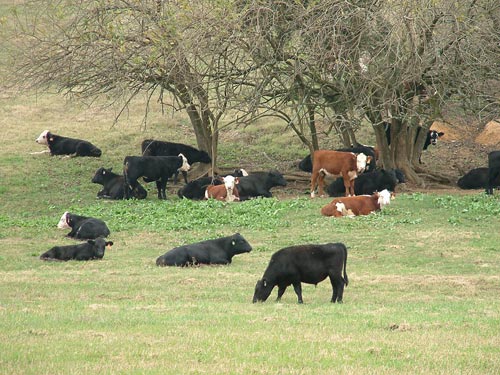March 28, 2011

Unlike 2009 and 2010, Arkansas' cattle numbers in 2011 have followed the national trend downward, according to the USDA’s National Agricultural Statistics Service (NASS).
In Arkansas, weather takes some of the blame for the decrease, said Tom Troxel, associate department head for animal science for the University of Arkansas Division of Agriculture. 2008 and 2009 were good weather years for pasture with cool summers and plenty of rain.
"Arkansas cattle producers enjoyed excellent environmental conditions and selling prices remained relatively strong,” said Troxel, adding "2010 was a much different year."
After a rainy start, "temperatures increased and rainfall decreased, which resulted in reduced hay supplies and less grass for grazing, prompting producers to feed expensive hay weeks earlier than normal. As a result, Arkansas cattle producers had to make a choice and it appeared many sold cattle.”
Troxel also attributes the downward trend to an aging population of cattle producers.
"Some have wondered about the average age of cattle producers - it's getting older and older all the time. Cattle prices have been very good and some may have decided to sell out.”
As for weather, "over the past three to five years major cow-calf areas of the county suffered severe drought.” This prompted cattle producers in the Great Plains and the Southeast to reduce their herds.
Troxel said economic indicators "would tell cattle producers to rebuild but they haven't. Many are cautious because of increasing input costs and higher selling prices don't always mean higher profits.”
NASS estimated there were 30.9 million beef cows in the United States, down 2 percent from Jan. 1, 2010. Beef replacement heifers were down 5.2 million or 5 percent -- that indicates herd expansion is still another year away.
"The most interesting statistic to me is the 2010 calf crop was estimated at 35.7 million head, down 1 percent from 2009,” Troxel said. "This is the smallest calf crop since the 34.9 million born during 1950.”
As of Jan. 1, Arkansas cattle and calves totaled 1.72 million head, down 10 percent from a year earlier.
"Connecticut was the only other state to record a 10 percent decrease in cattle numbers.”
The calf crop for the full year of 2010 was 800,000, down 2 percent. All cows and heifer that have calved, at 940,000 head, were down 1 percent from 2010. Beef cows, at 928,000 head, were down 1 percent and milk cows, at 12,000 head, were down 8 percent.
"The classifications of cattle that were down the largest were heifers and steers,” Troxel said. "Heifers weighing 500 pounds were down 26 percent and steers were down 35 percent, and calves weighing less than 500 pounds were down 11 percent.
"These numbers tell me our stocker operators ran fewer cattle in 2010 due to the hot dry summer and fall. In addition, cow-calf producer sold their calf crop of both steers and heifers, rather than retaining ownership or developing heifers, once again due to lack for forage.
"It would appear Arkansas' cow herd will not expand for another couple of years.
"The bright spot for 2011 is the selling price of cattle -- at an all-time record high. At least the selling price is a bright spot for those cattle producers who will have cattle to sell in 2011.”
For more information on cattle production, visit www.aragriculture.org/beef.htm or contact your county Extension office.
You May Also Like




